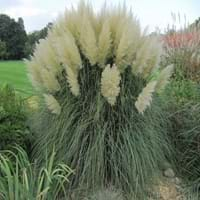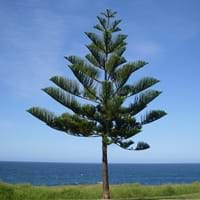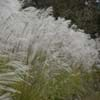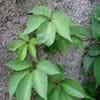Life Span
Perennial
Perennial
Origin
Mediterranean, Northern Africa
Australia
Types
Not Available
not available
Habitat
marshes, Riverbanks
Subtropical forests
USDA Hardiness Zone
6-9
9-11
Sunset Zone
Not Available
H1, H2, 17, 21, 22, 23, 24
Habit
Upright/Erect
Pyramidal
Flower Color
Purple, Silver
Green
Flower Color Modifier
Bicolor
Bicolor
Leaf Color in Spring
White, Gray Green
Dark Green
Leaf Color in Summer
Light Green
Dark Green
Leaf Color in Fall
Purple, Tan
Dark Green
Leaf Color in Winter
Purple, Tan
Dark Green
Leaf Shape
Grass like
Needle like
Plant Season
Summer, Fall, Winter
Spring, Summer, Fall, Winter
Sunlight
Full Sun
Full Sun, Partial Sun, Partial shade
Type of Soil
Loam
Loam, Sand
The pH of Soil
Acidic, Neutral
Acidic, Neutral, Alkaline
Soil Drainage
Well drained
Well drained
Bloom Time
Late Summer, Fall
Spring
Tolerances
Drought
Drought, Salt, Soil Compaction
Where to Plant?
Ground
Ground
How to Plant?
Seedlings, Vegetative
Tip cutting
Plant Maintenance
Medium
Medium
Watering Requirements
Water once every two or three weeks
Allow to dry out slightly between watering
In Summer
Lots of watering
Lots of watering
In Spring
Moderate
Moderate
In Winter
Average Water
Average Water
Soil pH
Acidic, Neutral
Acidic, Neutral, Alkaline
Soil Type
Loam
Loam, Sand
Soil Drainage Capacity
Well drained
Well drained
Sun Exposure
Full Sun
Full Sun, Partial Sun, Partial shade
Pruning
Cut back all stems to the same height
Prune if you want to improve plant shape, Remove damaged leaves
Fertilizers
0-10-10 NPK fertilizer
All-Purpose Liquid Fertilizer, fertilize every 2-3 weeks while growing
Pests and Diseases
Drought, Edema
Anthracnose, Branch Droop, Root rot, Yellow Leaves
Plant Tolerance
Drought
Drought
Flowers
Showy
Insignificant
Flower Petal Number
Single
Not Available
Foliage Texture
Fine
Fine
Foliage Sheen
Matte
Glossy
Attracts
Birds
Not Available
Allergy
Noxious Weed
Not Available
Aesthetic Uses
Borders, Showy Purposes
Showy Purposes, Used as Christmas tree
Beauty Benefits
Not Available
No Beauty Benefits
Environmental Uses
Erosion control
Shelter for wildlife, Windbreak
Medicinal Uses
Not Available
Not Available
Part of Plant Used
Leaves
Whole plant, Wood
Other Uses
Cultivated for fodder
Used in Furniture
Used As Indoor Plant
No
Yes
Used As Outdoor Plant
Yes
Yes
Garden Design
Cutflower, Dried Flower/Everlasting, Feature Plant, Mixed Border
Container, Feature Plant, Houseplant, Screening / Wind Break, Shade Trees, Street Trees, Tropical
Botanical Name
SACCHARUM ravennae
ARAUCARIA heterophylla
Common Name
Hardy Pampas Grass, Plume Grass, Ravennagrass
Norfolk Island Pine
In Hindi
Plume Grass
नोरफोक द्वीप पाइन
In German
Plume Gras
Norfolk-Insel Pine
In French
Plume Herbe
Norfolk Île Pine
In Spanish
Penacho de hierba
Norfolk Pine Island
In Greek
Plume Grass
Νησί Νόρφολκ Pine
In Portuguese
Plume grama
Ilha Norfolk Pine
In Polish
Pióropusz Trawa
Norfolk Pine
In Latin
Kessinger Grass
Insula Norfolk Pinus
Phylum
Magnoliophyta
Coniferophyta
Class
Lilopsida
Pinopsida
Family
Poaceae
Araucariaceae
Genus
Saccharum
Araucaria
Clade
Angiosperms, Commelinids, Monocots
Not Available
Tribe
Andropogoneae
Not Available
Subfamily
Panicoideae
Not Available
Number of Species
Not Available
Difference Between Plume Grass and Norfolk Island Pine
If you are confused whether Plume Grass or Norfolk Island Pine are same, here are some features about those plants to help you choose better. Many people think that these two plants have the same characteristics, but one can see Plume Grass and Norfolk Island Pine Information and learn more about it. Fertilizers required for proper growth of Plume Grass are 0-10-10 NPK fertilizer, whereas for Norfolk Island Pine fertilizers required are All-Purpose Liquid Fertilizer and fertilize every 2-3 weeks while growing. Hence, one should know the basic difference between Plume Grass and Norfolk Island Pine if you are planning to have them in your garden to enhance its beauty.
<
Flowering PlantsImportance of Plume Grass and Norfolk Island Pine
Want to have the most appropriate plant for your garden? You might want to know the importance of Plume Grass and Norfolk Island Pine. Basically, these two plants vary in many aspects. Compare Plume Grass and Norfolk Island Pine as they differ in many characteristics such as their life, care, benefits, facts, etc. Every gardener must at least have the slightest clue about the plants he wants to plant in his garden. Compare their benefits, which differ in many ways like facts and uses. The medicinal use of Plume Grass is Not Available whereas of Norfolk Island Pine is Not Available. Plume Grass has beauty benefits as follows: Not Available while Norfolk Island Pine has beauty benefits as follows: Not Available.
Compare Facts of Plume Grass vs Norfolk Island Pine
How to choose the best garden plant for your garden depending upon its facts? Here garden plant comparison will help you to solve this query. Compare the facts of Plume Grass vs Norfolk Island Pine and know which one to choose. As garden plants have benefits and other uses, allergy is also a major drawback of plants for some people. Allergic reactions of Plume Grass are Noxious Weed whereas of Norfolk Island Pine have Not Available respectively. Having a fruit bearing plant in your garden can be a plus point of your garden. Plume Grass has showy fruits and Norfolk Island Pine has no showy fruits. Also Plume Grass is not flowering and Norfolk Island Pine is not flowering . You can compare Plume Grass and Norfolk Island Pine facts and facts of other plants too.





